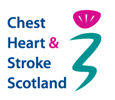Oxygen therapy assessment
Some patients with lung conditions such as COPD or Pulmonary Fibrosis can benefit from oxygen therapy. However it is important to remember that like any other treatment, long term oxygen therapy must only be prescribed after an assessment of the individuals needs.
Oxygen therapy is only given to patients who have chronically low levels of oxygen in their blood - Long term oxygen therapy (LTOT). This is used at home using an oxygen concentrator. Ambulatory O2 is given when O2 levels drop during exercise or activity. It is given by small portable O2 cylinders.
Patients who have normal O2 levels but are breathless are not prescribed O2 but may be referred for other therapy such as pulmonary rehabilitation or therapy to help with anxiety or breathing control.
The oxygen assessment is done only when the patient is free from infection and is in a stable medical state. It is usually done at an out patient oxygen assessment clinic in hospital.
There will be a full assessment which may involve a review of their condition and current treatment. This is followed by breathing tests (spirometry), a supervised exercise test on a treadmill and several blood samples. The first blood sample is taken without additional oxygen. Gradually small doses of oxygen are given to the patient, and after a period of time and the blood gases are checked again. This process is repeated. Only if oxygen therapy is suitable for the person would they be supplied with oxygen at home. This is a prescription for the individual based on their test results. Most people on home oxygen will need to use it for a minimum of 15 hours per day, and up to 24 hours per day if required.
People who are still smokers will not be prescribed home oxygen due to the high risk of combustion, fire and burns. They will usually be referred to smoking cessation help and once they have stopped, they can be referred to for oxygen therapy assessment.
| Additional information | |
|---|---|
Chest Heart and Stroke Scotland:
|
|




